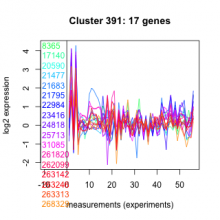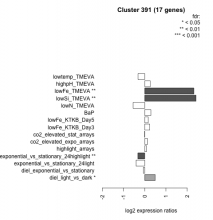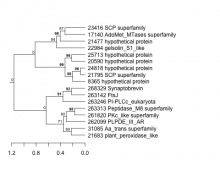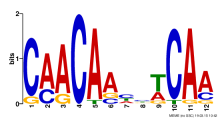21683 plant_peroxidase_likeThalassiosira pseudonana
| Chromosome | Product | Transcript Start | End | Strand | Short Name | |
|---|---|---|---|---|---|---|
| 21683 | chr_3 | plant_peroxidase_like | 614558 | 616456 | + | plant_peroxidase_like |
| NCBI ID | Ensembl Genomes exon ID |
|---|---|
| 7444708 | Thaps21683.3, Thaps21683.1, Thaps21683.2 |
| Expression Profile | Conditional Changes | Cluster Dendrogram | Discovered Potential cis-Regulatory Motifs |
|---|---|---|---|
Thaps_hclust_0391 |
 |
 |
   |
| Normalized Mean Residue | Discovered Potential cis-Regulatory Motifs | |
|---|---|---|
|
Thaps_bicluster_0017 |
0.42 |
| KEGG description | KEGG Pathway |
|---|---|
| Not available | Not available |

Add comment